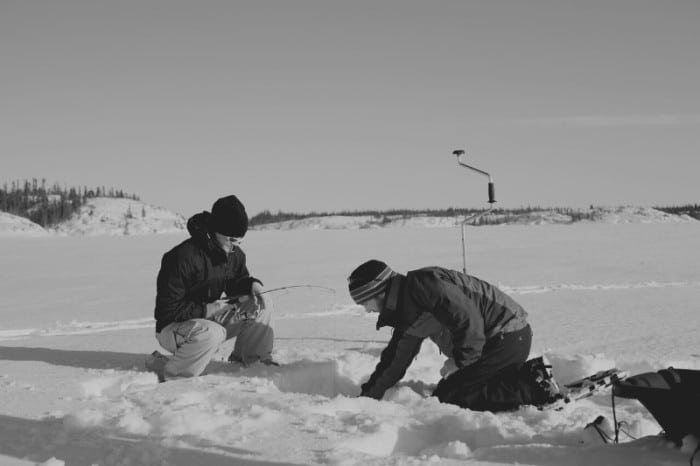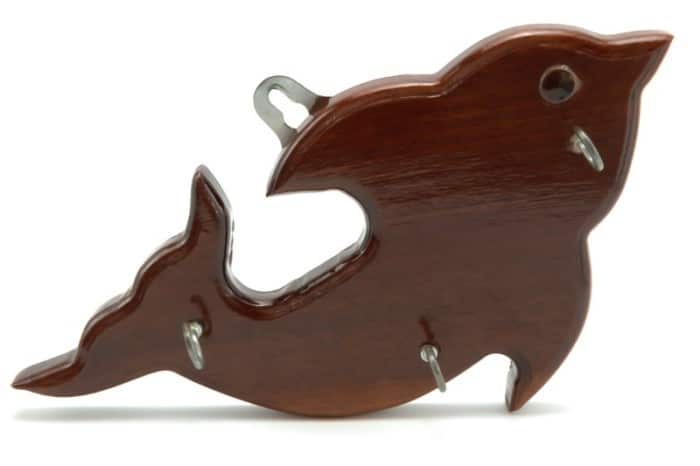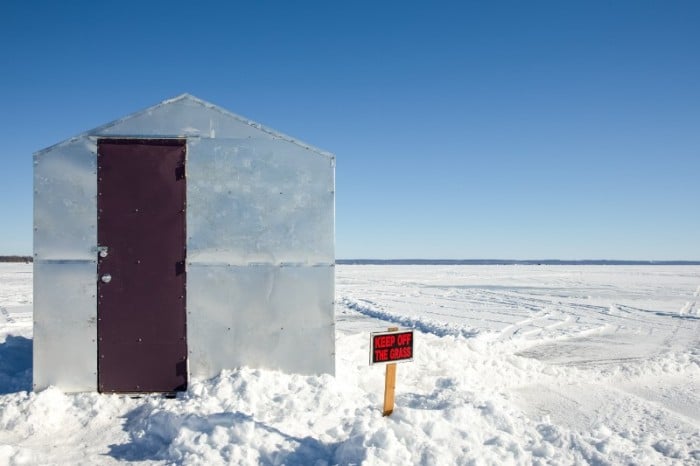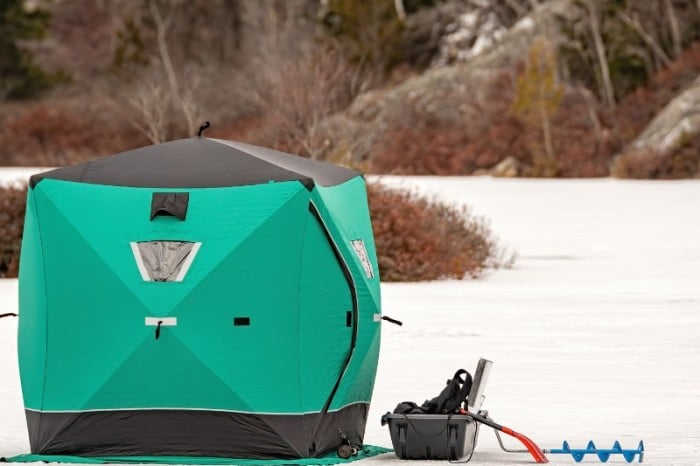Ice fishing is a popular hobby worldwide, from the United States to Sweden to China and everywhere the water freezes in winter. Early Native Americans were just one group that realized the fish were still under the ice and could be used as a winter food source.
The history of ice fishing is not well recorded, but archeologists agree that Native People have been relying on ice fishing to survive for at least 2000 years. The tools and methods have changed significantly, ranging from simple spearfishing to modern-day equipment with all the bells and whistles.
Keep on reading for a more in-depth look at the history of ice fishing, from before recorded history to now.
Early Ice Fishing: An Important Means Of Survival
Ice fishing in what is now the United States and Canada was a means of winter survival to catch the same fish they relied on during summer, even when the water’s surface had frozen over.
Two thousand years ago, the equipment used was different than today, and ice fishing has become a hobby rather than a necessary part of surviving harsh winters.
People living in the Northern States and Midwest areas and throughout Canada faced long periods of below-freezing temperatures.
Winter meant limited foraging and hunting, relying on large migrating animals, stored food, and ice fishing.
Access to fresh food was often rare once winter rolled around, making ice fishing especially important.
1. Ice Fishing Is At Least 2000 Years Old
Ice fishing is a method of fishing that many early peoples adopted in many different parts of the world.
Given the lack of recorded history and the lack of archaeological evidence, it’s impossible to determine the start of ice fishing. Still, this article will focus on North American evidence and development.
There is archeological evidence supporting ice fishing being used 2,000 years ago, but it’s very likely it was thousands of years before that people realized they could catch fish under the ice.
The methods used were primitive and will be covered in more depth later, unlike any style of ice fishing practiced today.

2. Natives Would Use Ice Picks And Axes To Chip Away The Ice
Augers were unavailable back then, so creating the hole in the ice took a bit more time and energy.
Either stone axes or ice picks were used to chip away the ice a bit at a time and removed to leave an opening in the ice.
Due to the energy needed to open a hole in the ice, thick sheets of ice would likely require many hours of effort to get through. Once open, the people would make sure to prevent it from freezing over again.
Ice fishing was a considerable investment of time and energy, devoting a risky amount of resources if the spot did not prove productive.
Ice-fishing holes at this time were opened in relatively shallow water, unlike today, where anglers may set up in depths of 20+ feet.
3. Spearfishing Was The Go-To Method At First
Modern-day rod and reel fishing was not an option, so early North American peoples used basic spears with stone, bone, or wooden tips to spear the fish.
Spearfishing was the go-to method for most Natives during summer and winter fishing. Spearfishing involves straight sticks designed to impale and keep the fish from swimming off.
Due to the limited power behind a spear, spearfishing is suitable in water up to a few feet in depth, but deep water makes it impossible to have the power to catch fish.
Spearheads were designed to impale the fish and were either multiple points or barbed to secure it once the spear went through the fish.
Spears for spearfishing were a valuable tool and could catch fish and frogs, eels, and other aquatic animals. In some tribes, spears held cultural significance, while in others, it was simply a tool.
4. Structures Were Created Over The Holed For Ease Of Use
One of the earliest developments in ice fishing was the use of structures that blocked out the light and made spearfishing easier.
Having a structure around you while spearfishing also provided protection from the elements, helping keep the fishermen warm.
Spearfishing is highly dependent on visibility, and being able to see the fish and block out sunshine eliminated the glare that made fishing more difficult.
It also helped keep the fish from getting spooked, although the spearfisher still needed to remain still.
Shelters had the added benefit of helping protect the ice hole, making it easier to maintain and prevent it from freezing over.
While the shelters were primitive compared to today’s ice tents, their importance and usefulness were paramount.
5. Wooden Decoy Fish Were Used To Attract Fish
The timeline is not exact if decoys or shelters were used first, but both helped catch winter fish.
Wooden decoy fish were hand-carved to mimic real fish and were placed in the water to attract large fish while ice fishing, much like modern artificial lures.
Unlike modern lures, these decoys were still used in conjunction with spearfishing and did not have hooks on them.
Still, they were suspended in the water attached to cordage, and a jigging technique was used to make the decoy seem more lifelike.
These wooden decoys were often a work of art, in addition to being a tool. Individual scales, fins, and other details were carefully hand carved with great care being placed in each decoy.

6. Eventually, Lures Carved From Bone And Wood Were Used
Spearfishing was the norm for a long time but lures with hooks were eventually adapted for ice fishing.
These lures were carved from wood or animal bones, and the hooks were fashioned from metal or bones, depending on available materials.
Trading with early settlers helped change ice fishing, allowing natives to use new materials and discover new techniques.
Fishing with cordage became more widespread as a form of the early fishing line, and later fishing innovations were incorporated into the lifestyles.
Carving lures was both an effective way to catch fish and a way to pass the free time they had.
Of course, these fishing lures were useful for year-round fishing, so that they could be used for ice fishing as well as shore or kayak/canoe fishing.
The Development Of Modern Ice Fishing
Ice fishing, in a modern sense, using a rod and reel and either live bait or lures and modern equipment, started to come about in the late 1800s, and over the 1900s, plenty of progress was made in the sport.
1. The First Ice Shanty
While the Native Americans built structures to make spearfishing easier, one of the best stories about the first ice shanty goes to an individual named Sven Stevenson.
The story goes that Sven used an outhouse outside his cabin on a hill overlooking Lake Minnewaska in Minnesota.
Much to his surprise, the outhouse slid down the hill onto the lake, and the friction from sliding managed to open a small hole in the ice that the outhouse sat perfectly around.
From there, Sven realized that he could enjoy himself with a fishing line in the water and alone with his thoughts.
From there, his neighbors did the same thing with their outhouses during winter and then used horses to pull them off before the ice melted.
While the truth to that story may be up for debate, outhouse-style buildings were constructed on the ice as men across the cold states built their own ice-fishing getaways.
Wood stoves and food for several days were brought into these structures, allowing ice anglers maximum time on the ice while being comfortable.
Although the materials and construction of ice shelters have changed significantly since then, they still have much in common with their predecessors.

2. The Ice Auger
An ice auger is an incredibly efficient tool compared to chipping holes in the ice with picks or an axe.
Thanks to William A. Clark in 1873, his threaded point ice auger would drill into the ice while effectively removing it.
Seventy-five years later, the powered ice auger was invented, making ice fishing more straightforward and more accessible for those who could afford it.
The development of the ice auger has been one of the most important for hobbyist ice fishing, as many still use augers to drill holes in the ice.
3. Tip-ups
Once it was easy to bore several holes in the ice quickly; it was only a matter of time before clever anglers began to look for ways to fish multiple holes simultaneously.
The earliest patent for ice-fishing tip-ups comes from Charles Costellow in 1890, although they were not popularized until the 1930s.
An ice fishing tip-up is a relatively simple device that uses a brightly colored flag and a mechanism that detects when the fishing line is taken by a fish, causing the net to spring up.
From there, the fisherman can set the hook and pull the fish in. Tip-ups allow the angler to set up multiple lines simultaneously and still be hands-free.
With tip-ups, you can set as many lines as legally permitted and make your trip exponentially more productive.
4. Shorter Ice Fishing Rods
When ice fishing first started to grow in popularity, people were using their regular fishing rods, but then these rods started to get shorter and shorter.
Now, 100 years later, ice fishing rods are primarily three feet or less. Part of the reason ice fishing rods are shorter than their counterparts is because the length of a fishing rod increases its casting distance.
Casting is unnecessary in ice fishing, so shorter rods make more sense.
Ice fishing rods are also lightweight, so if you are jigging for hours at a time, you won’t be as tired as if you tried to do the same with a 7’ fishing rod.
Most of the weight is loaded into the tip of the ice fishing rod, and even with relatively large fish, the fight in winter can be managed on a shorter rod thanks to the cold water resulting in lethargic fish.
5. Portable Ice Fishing Tents
Ice fishing shanties were made of wood or other heavy materials for a long time, and portable ice fishing tents are the newest innovation in the hobby.
In 1980 Dave Genz changed the future of ice fishing with his flip-over fish house, making ice fishing shelters for occasional and easy use.
Portable ice fishing shelters are perhaps the pinnacle of modern ice fishing, allowing 10-minute setups in any location with protection from the elements.
Combined with sleds, it’s easy to carry plenty of gear and conveniences to a chosen fishing location and have a pole in the water in half an hour.
Flip-over ice fishing tents and standard tent-style options are both made with high-quality materials and insulation, resulting in a true shelter from winter elements.

6. Improved Materials
Over the past 200 years, there have been many advancements in the available materials for ice fishing gear. Ice fishing poles have gotten stronger and lighter and have additional options at all price points.
The most popular materials for ice fishing rods are graphite, fiberglass, and composite materials. Each of these materials excels at different uses.
Graphite rods are the lightest and most sensitive but are also the weakest and most likely to break under pressure.
On the other hand, fiberglass is stronger but trades off sensitivity, which is a big drawback for many anglers.
Composite materials, on the other hand, offer the best of both worlds but can be an expensive option for quality rods.
Mass-produced lures come in various designs, colors, and uses to find the exact bait a fisherman needs. These lures are inexpensive, durable, and widely available, allowing more options than ever before.
Fishing line materials have massively improved in this time as well, resulting in cheaper, more durable, and thinner lines than ever before.
Specially formulated lines perform well even in sub-freezing temperatures without a hitch.
7. Portable Heating And Other Conveniences
Nowadays, anglers can go ice fishing with a rod and a hole in the ice, or anglers can go all out and turn their portable ice shelter into a heated, comfortable place to hang out.
Ice fishing has become an increasingly comfortable sport thanks to many modern conveniences.
Portable heaters that use gas instead of wood-burning stoves are lightweight and fuel-efficient, providing days of heat out of a single tank.
Heating can turn a cold experience into a comfortable, fun, and memorable one.
Ice-fishing flashers are a great way to get an idea of what is going on under the ice, giving you depth and bottom composition and even letting you know when fish are near your lure.
Modern smartphones replaced radios and cameras and allow calls, providing anglers an easy way to have entertainment and take pictures in a compact package.
They can choose to be as connected (or disconnected) as they want to create their ideal ice fishing getaway.
Wrapping Up
The history of ice fishing in North America has a long and only partially fleshed-out history. Still, we know we have the Native Americans to thank for early developments in ice fishing.
As settlers began to settle across Northern and Midwest states, ice fishing turned from a survival strategy to a popular hobby.
Modern ice fishing tools have made the sport more effortless, more accessible, and more comfortable compared to what it used to be.
Ice fishing rods offer versatility and fishing at any depth, and drilling new holes in the ice and moving spots is as easy as can be.
